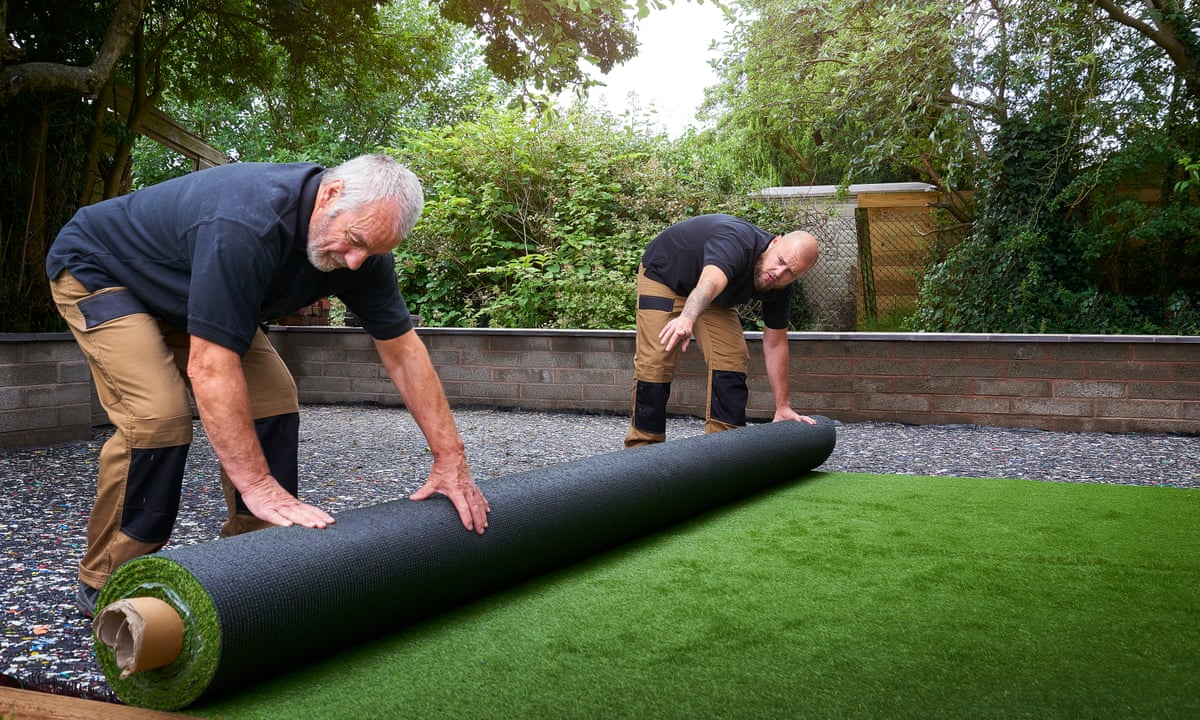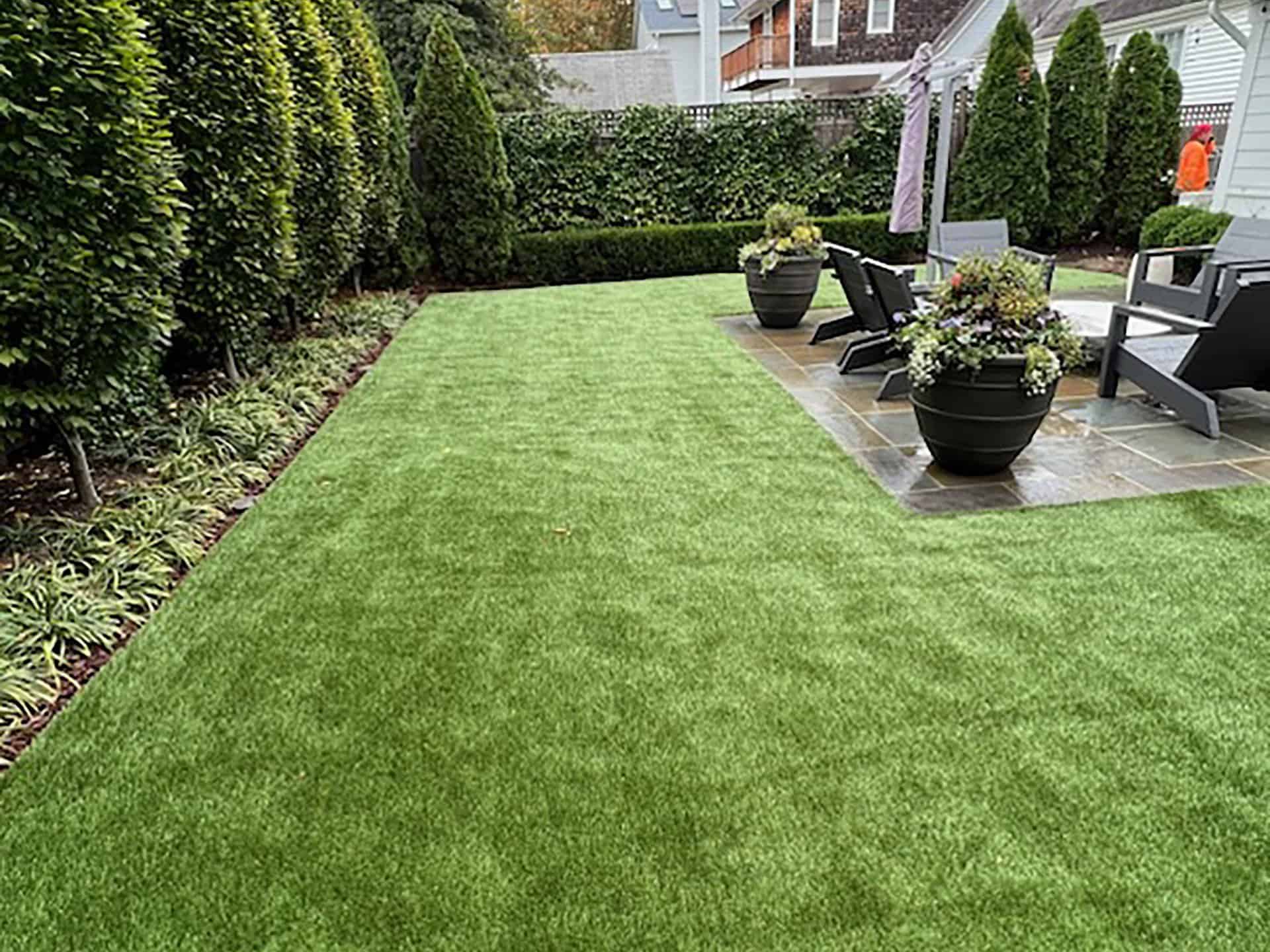Look Into the Environmental Advantages of Opting for Artificial Grass Solutions
The adoption of man-made grass options presents a compelling chance to resolve pressing ecological difficulties. By dramatically lowering water use and reducing the application of dangerous chemicals, these options not only promote lasting landscaping but also shield neighborhood ecological communities. The reduced carbon footprint linked with lowered upkeep activities adds to an extra sustainable approach to land monitoring. The implications of these advantages expand beyond simple preservation initiatives, elevating concerns regarding their lasting impact on environment preservation and general ecological equilibrium. Checking out these measurements exposes a complex interaction worth thinking about.
Water Preservation Advantages
Among one of the most considerable benefits of fabricated turf is its capacity to conserve water. Typical yard yards require significant irrigation, particularly in locations susceptible to dry spell or water restrictions. On the other hand, synthetic grass does not need watering, significantly decreasing the total demand for water sources. This feature is especially useful in dry regions where water shortage is a pressing worry.
By removing the demand for routine watering, synthetic grass contributes to lasting landscape techniques and helps alleviate the ecological influence of extreme water usage. The preservation of water expands to the decrease of overflow, which can lead to dirt disintegration and river contamination.
In addition, the setup of artificial lawn permits home owners and communities to designate water resources more effectively, concentrating on vital usages such as drinking water and farming. The change in the direction of fabricated grass not just promotes liable water use however likewise lines up with broader environmental goals focused on preserving natural deposits.
As neighborhoods significantly prioritize sustainability, the water preservation advantages of synthetic grass provide a compelling situation for its adoption in commercial and domestic landscaping tasks.
Lowered Chemical Use
The shift to synthetic grass substantially reduces the reliance on chemical treatments commonly used in natural grass upkeep. Traditional turf management generally involves the application of herbicides, pesticides, and plant foods to promote development and control bugs. These chemicals can posture dangers to human health, local wildlife, and the environment, adding to soil and water contamination.
In comparison, artificial grass eliminates the requirement for these harmful compounds. By lessening the release of synthetic substances into the ecological community, synthetic lawn advertises healthier dirt and water systems.
Moreover, the lack of chemical drainage related to synthetic grass installments helps secure neighborhood waterways from pollution, supporting aquatic life and maintaining biodiversity. Arizona artificial turf. As areas significantly focus on sustainable methods, going with synthetic grass provides a feasible remedy that aligns with environmental conservation goals. Via this change, residential property owners can take pleasure in lush green spaces without compromising ecological health, leading the method for a much more lasting future
Reduced Carbon Footprint

Moreover, the installation of man-made lawn can result in considerable water preservation. All-natural continue reading this lawns need substantial amounts of water for watering, which not just includes in the carbon footprint connected with water removal and therapy yet also stress regional water sources. On the other hand, synthetic grass requires minimal maintenance, needing no watering, consequently dramatically reducing water usage and its connected power prices.
Additionally, the longevity of man-made lawn contributes to its lower carbon influence. With a lifespan of as much as 15 years or even more, the demand for constant replacements is reduced, leading to less waste and reduced power consumption in manufacturing and taking care of conventional turf choices. Overall, synthetic lawn provides a sustainable alternative for eco mindful landscaping.
Habitat Conservation
Habitat conservation is a crucial consideration in the discussion over landscape design choices, especially when comparing synthetic grass to all-natural grass. Natural turf lawns typically call for extensive maintenance, consisting of using fertilizers, herbicides, and chemicals, pop over here which can negatively affect neighborhood communities. These chemicals can seep right into the dirt and rivers, hurting native flora and fauna and interfering with regional environments.
Synthetic grass eliminates the demand for harmful chemicals, consequently securing nearby wildlife and preserving the stability of bordering environments. The installation of man-made turf can lead to the conversion of previous turf areas right into more biodiverse landscapes, such as pollinator gardens or indigenous plant locations, which can support local wildlife.
Inevitably, the transition to synthetic lawn not just conserves water and minimizes upkeep efforts but also promotes a more harmonious relationship between human activities and the all-natural atmosphere, advertising habitat preservation while doing so.
Long-Term Sustainability
Long-term visit the site sustainability is a vital consider evaluating the benefits of fabricated lawn over standard grass lawns. Among the most substantial benefits of artificial lawn is its sturdiness; it can last approximately 15-20 years with marginal upkeep, whereas all-natural lawn requires constant reseeding and replacement. This long life lowers the need for consistent resources, such as water, fertilizers, and chemicals, which are necessary for preserving a healthy turf lawn.
In addition, artificial turf adds to a reduction in carbon emissions related to grass care devices. Typical yards usually need gas-powered mowers, trimmers, and blowers, every one of which contribute to air pollution. Arizona turf. On the other hand, artificial grass removes the need for such devices, promoting a cleaner environment
In addition, the manufacturing of synthetic grass progressively utilizes recycled materials, enhancing its sustainability account. As producers take on environmentally friendly techniques, the environmental footprint of fabricated grass proceeds to lessen.

Verdict
The fostering of man-made turf options offers considerable ecological benefits, including considerable water conservation, decreased dependence on unsafe chemicals, and a lower carbon footprint. Additionally, fabricated lawn aids in preserving all-natural environments by decreasing land disturbance and advertising long-lasting sustainability through making use of sturdy materials. Collectively, these variables emphasize the possibility of fabricated lawn to contribute favorably to ecological health and wellness and supply a sensible alternative to conventional landscaping methods in a significantly resource-conscious world.
In comparison, artificial grass does not need watering, dramatically minimizing the total need for water sources. By minimizing the release of artificial substances into the environment, fabricated grass promotes healthier soil and water systems.
Furthermore, the installation of man-made grass can result in substantial water conservation. In comparison, artificial turf requires minimal upkeep, needing no watering, thereby dramatically lowering water use and its associated power expenses.
